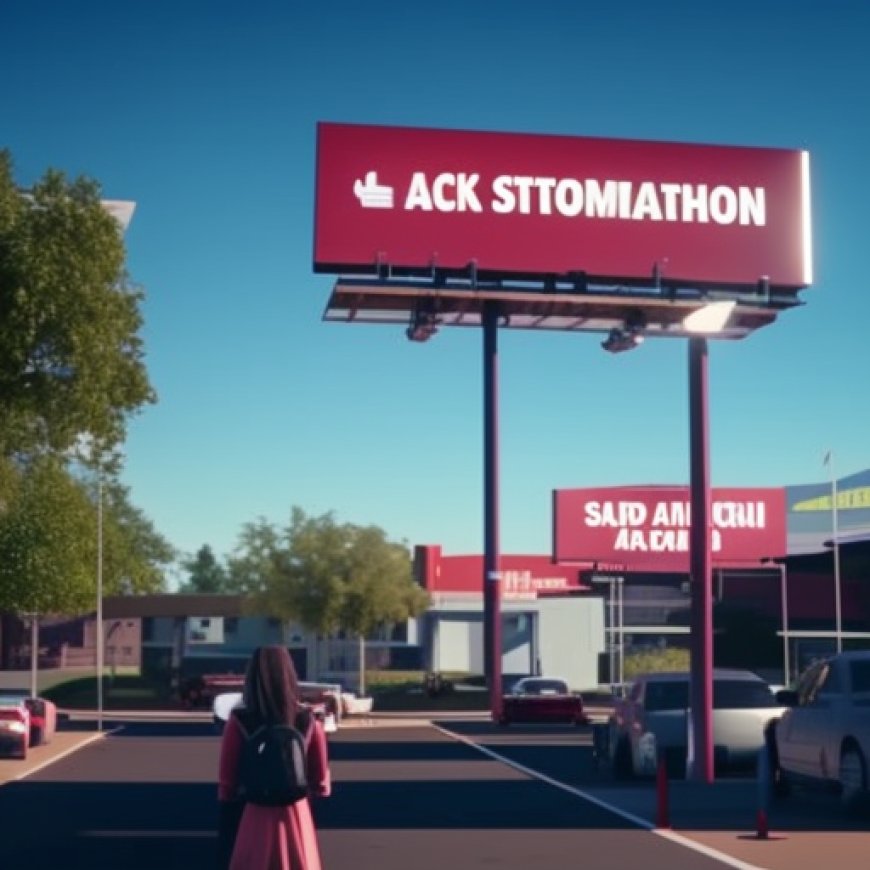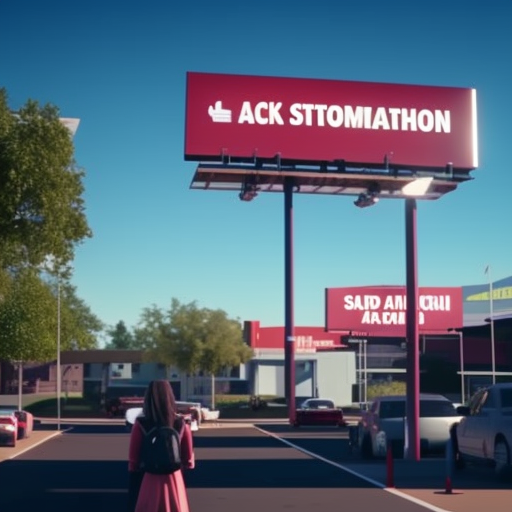Drones, tacos, and billboards: How California community colleges are trying to get students back to school
California community colleges launch marketing blitz CalMatters


In summary
In summary
After a historic drop in enrollment during the COVID-19 pandemic, California community colleges are ramping up marketing efforts, spending more than $40 million in state and federal dollars to lure students back. Is it working?
Introduction
San Diego is known for many things: surfing at La Jolla, the giant pandas at the zoo, and great Mexican food, to name a few.
Now, there’s a new item on your must-see list. On billboards, buses, and through social media posts starting this week, the city’s community college district is placing ads featuring iconic San Diego images, but scrawled over words like “zoo” and “surfing” are new ones: “community colleges,” “career training” and “affordable education.” In one ad, a picture of carne asada and corn tortillas is paired with a question: “Are you ready to taco-bout your future?”
The San Diego Community College District isn’t the only one vying for attention. Los Rios Community College District, which encompasses four community colleges in Sacramento County, put on a drone light display at a Sacramento Republic soccer game last fall with words like “Low Cost,” “Local Careers” and “Start Your Future” suddenly appearing in blue lights across the night sky. The show, along with other signs and marketing efforts at the soccer stadium, cost the district $160,000.
These eye-catching stunts are part of a new marketing push to lure California community college students back to campuses after enrollment dropped to a 30-year low during the COVID-19 pandemic. Statewide, community colleges lost nearly 20% of students between 2019 and 2021, according to a memo from the California Community College Chancellor’s Office.
Funding and Marketing Efforts
During the pandemic, California’s community colleges received over a billion dollars in state and federal pandemic relief funds. When enrollment dropped, community colleges and districts started using part of that money to find creative ways to bring students back.
The California Community College Chancellor’s Office has spent more than $40 million in marketing since 2021, more than double what the office spent in the two years prior.
“We may never have this kind of influx of resources again,” said Gabe Ross, chief strategy officer for Los Rios Community College District.
Impact of Marketing Campaigns
Still, what community colleges across the country spend on marketing is a small amount compared to other colleges and universities.
“On a per-student basis, for-profit colleges outspend nonprofits (private colleges) more than 4 to 1 and outspend public institutions more than 20 to 1 — a pattern that has held steady over time,” wrote a 2020 report from the Brooking’s Institute. Community colleges spend less on average per-student than four-year institutions too, according to the same report.
California colleges say their advertising campaigns lead to more awareness, and they point to increased clicks and website traffic as evidence. What they don’t know is whether students who see a marketing campaign and click on a college website actually enroll.
Ross said his district expects to see a near 10% enrollment increase this fall after losing more than 18% of its students during the pandemic.
But he can’t say for sure whether the enrollment trends are a direct result of the district’s marketing blitz, which cost about $840,000 in each of the last two years. Before the pandemic, the marketing team spent between $200,000 and $600,000 per year, Ross said.
“People don’t make their college choices in the same way they decide where to have dinner tonight. It’s not just driving by a billboard. It’s a long game,” he said.
Community Colleges’ Efforts to Boost Enrollment
In San Diego, the pun-filled campaign is geared toward older and working students, who left the community college system at the highest rate. The idea came out of conversations with current students, who said they would respond best to an advertising campaign that was fun and local, according to Jack Beresford, district spokesperson.
With an influx of money, the chancellor’s office launched a new campaign — called “I can go to college” — that it promoted on billboards at bus stations, over highways and at seven airports throughout California. TV commercials are planned for both men’s and women’s World Cup matches, and at local and community events around the state, there’s plenty of new swag, like water bottles and drawstring bags.
Last fall, enrollment numbers increased for the first time since the pandemic began, and Paul Feist, vice chancellor of communications, said the final enrollment estimates for spring 2023 look even stronger.
“We’re not saying marketing is responsible for all of that,” Feist said. With 116 colleges spread out across the state, many of which conduct their own marketing, “it’s very hard to track,” he said.
The website for the “I can go to college” marketing campaign has garnered over 335 million page views, including 115,000 clicks on the “
SDGs, Targets, and Indicators
| SDGs | Targets | Indicators |
|---|---|---|
| SDG 4: Quality Education | Target 4.3: Equal access to affordable vocational training | Indicator not mentioned in the article |
| SDG 8: Decent Work and Economic Growth | Target 8.6: Increase the proportion of youth and adults with relevant skills for employment | Indicator not mentioned in the article |
| SDG 10: Reduced Inequalities | Target 10.3: Ensure equal opportunity and reduce inequalities of outcome | Indicator not mentioned in the article |
| SDG 17: Partnerships for the Goals | Target 17.17: Encourage and promote effective public, public-private, and civil society partnerships | Indicator not mentioned in the article |
1. Which SDGs are addressed or connected to the issues highlighted in the article?
The issues highlighted in the article are connected to SDG 4: Quality Education, SDG 8: Decent Work and Economic Growth, SDG 10: Reduced Inequalities, and SDG 17: Partnerships for the Goals.
2. What specific targets under those SDGs can be identified based on the article’s content?
Based on the article’s content, the specific targets that can be identified are:
- Target 4.3: Equal access to affordable vocational training
- Target 8.6: Increase the proportion of youth and adults with relevant skills for employment
- Target 10.3: Ensure equal opportunity and reduce inequalities of outcome
- Target 17.17: Encourage and promote effective public, public-private, and civil society partnerships
3. Are there any indicators mentioned or implied in the article that can be used to measure progress towards the identified targets?
No indicators are mentioned or implied in the article that can be used to measure progress towards the identified targets.
4. SDGs, Targets, and Indicators
| SDGs | Targets | Indicators |
|---|---|---|
| SDG 4: Quality Education | Target 4.3: Equal access to affordable vocational training | Indicator not mentioned in the article |
| SDG 8: Decent Work and Economic Growth | Target 8.6: Increase the proportion of youth and adults with relevant skills for employment | Indicator not mentioned in the article |
| SDG 10: Reduced Inequalities | Target 10.3: Ensure equal opportunity and reduce inequalities of outcome | Indicator not mentioned in the article |
| SDG 17: Partnerships for the Goals | Target 17.17: Encourage and promote effective public, public-private, and civil society partnerships | Indicator not mentioned in the article |
Behold! This splendid article springs forth from the wellspring of knowledge, shaped by a wondrous proprietary AI technology that delved into a vast ocean of data, illuminating the path towards the Sustainable Development Goals. Remember that all rights are reserved by SDG Investors LLC, empowering us to champion progress together.
Source: calmatters.org

Join us, as fellow seekers of change, on a transformative journey at https://sdgtalks.ai/welcome, where you can become a member and actively contribute to shaping a brighter future.







